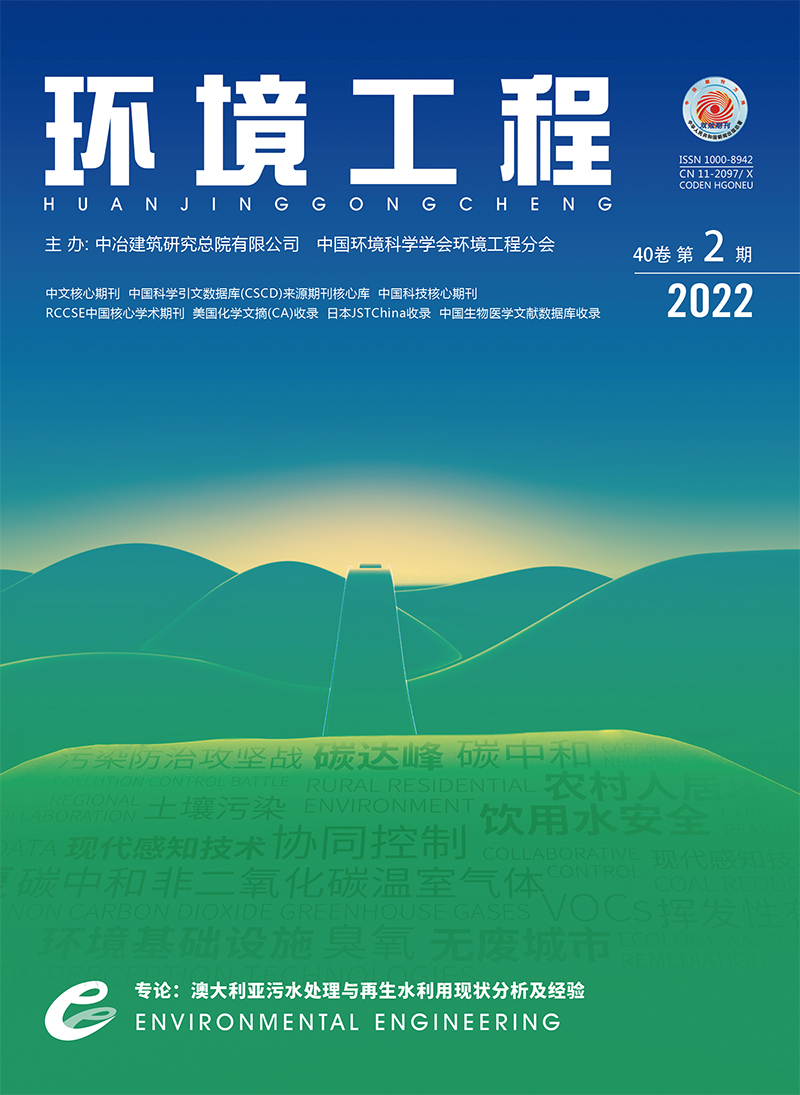| [1] |
STREETER H W,PHELPS E B,STREETER H W,et al.A study of the pollution and natural purification of the illinois eiver[J].Health Bulletin Department of Health Education & Welfare,1925,146(3):1436-1439.
|
| [2] |
HUANG B S,HONG C H,DU H H,et al.Quantitative study of degradation coefficient of pollutant against the flow velocity[J].Journal of Hydrodynamics,2017,29(1):118-123.
|
| [3] |
徐云麟.某些可降解有机污染物在河道中自净作用的初步研究[J].环境科学,1980(1):5-11.
|
| [4] |
傅国伟.河流水质数学模型及其模拟计算[M].北京:中国环境科学出版社,1987:267-269.
|
| [5] |
王宏,叶常明,雷志芳.天然水中有机污染物的生物降解模拟实验方法[J].环境化学,1994,13(3):229-233.
|
| [6] |
郭儒,李宇斌,富国.河流中污染物衰减系数影响因素分析[J].气象与环境学报,2008,24(1):56-59.
|
| [7] |
张亚丽,申剑,史淑娟,等.淮河支流污染物综合降解系数动态测算[J].中国环境监测,2015,31(2):64-67.
|
| [8] |
张培培,吴艺帆,庞树江,等.再生水补给河流北运河CODCr降解系数变化及影响因素[J].湖泊科学,2019,31(1):99-112.
|
| [9] |
VAGNETTI R,MIANA P,FABRIS M,et al.Self-purification ability of a resurgence stream[J].Chemosphere,2003,52(10):1781-1795.
|
| [10] |
OSTROUMOV S A.Water quality and conditioning in natural ecosystems:biomachinery theory of self-purification of water[J].Russian Journal of General Chemistry,2017,87(13):3199-3204.
|
| [11] |
NAYLOR W.The growth of opinion on the self-purification of rivers[J].Public Health,1893,6:236-239.
|
| [12] |
OSTROUMOV S A.On the biotic self-purification of aquatic ecosystems:elements of the theory[J].Doklady Biological Sciences,2004,396:206-211.
|
| [13] |
黄文红.浅谈水体污染与自净机制[J].江西水利科技,2000,26(4):222-224.
|
| [14] |
逢勇,周静,张文佳.江苏省太湖流域水环境容量计算研究[C]//中国环境科学学会2009年学术年会论文集(第1卷),2009:660-664.
|
| [15] |
范丽丽,沙海飞,逄勇.太湖湖体水环境容量计算[J].湖泊科学,2012,24(5):693-697.
|
| [16] |
GONZÁLEZ S O,ALMEIDA C A,CALDERÓN M,et al.Assessment of the water self-purification capacity on a river affected by organic pollution:application of chemometrics in spatial and temporal variations[J].Environmental Science and Pollution Research,2014,21(18):10583-10593.
|
| [17] |
冯帅,李叙勇,邓建才.太湖流域上游平原河网污染物综合衰减系数的测定[J].环境科学学报,2017,37(3):878-887.
|
| [18] |
冯帅,李叙勇,邓建才.太湖流域上游河网污染物降解系数研究[J].环境科学学报,2016,36(9):3127-3136.
|
| [19] |
赵雪霞,于鲁冀,王燕鹏.清潩河流域(许昌段)水生态环境功能分区指标体系构建[J].水利水电技术,2018,49(9):162-169.
|
| [20] |
徐少华.水样的采集与保存的技术方法探析[J].科技传播,2010(18):61-62.
|
| [21] |
国家环境保护总局.水和废水监测分析方法[M].4版.北京:中国环境科学出版社:223-284.
|
| [22] |
刘琰,郑丙辉,付青等.水污染指数法在河流水质评价中的应用研究[J].中国环境监测,2013,29(3):49-55.
|
| [23] |
谭夔,陈求稳,毛劲乔,等.大清河河口水体自净能力实验[J].生态学报,2007,27(11):4736-4742.
|
| [24] |
沈晔娜,吕军,陈军华,等.水源区河流非点源污染物入河量计算的水质方程反演方法[J].环境科学,2010,31(8):1768-1774.
|
| [25] |
FRANCIS C A,BEMAN J M,KUYPERS M M M.New processes and players in the nitrogen cycle:the microbial ecology of anaerobic and archaeal ammonia oxidation[J].The ISME Journal,2007,1(1):19-27.
|
| [26] |
杨柳燕,王楚楚,孙旭,等.淡水湖泊微生物硝化反硝化过程与影响因素研究[J].水资源保护,2016,32(1):12-22.
|
| [27] |
毛成责,矫新明,袁广旺,等.浅水富营养化湖泊水体磷吸附及固定研究进展[J].水产养殖,2016,37(1):24-29.
|
| [28] |
KELLER A A,CHEN X,FOX J,et al.Attenuation coefficients for water quality trading[J].Environmental Science & Technology,2014,48(12):6788-6794.
|


 Login
Login Register
Register E-alert
E-alert






 DownLoad:
DownLoad: